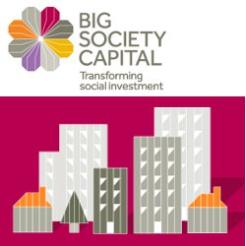The total amount of social investment funding paid out by Big Society Capital (BSC) since its inception has nearly doubled over the last year, reaching £68m by the end of 2015, according to new figures.
This latest total, revealed in an update on the institution’s website, compares to a figure of £36m at the end of 2014.
BSC attributes this growth to “greater demand from some charities and social enterprises to take on social investment now that it is more widely available”.
A further £127m has been drawn down from BSC “co-investors”, taking total BSC-related funding to £195m, up from £104m at the end of 2014.
This, said BSC, reflects “strong appetite among a surprisingly diverse range of investors (including for example local authority pension funds, housing associations, overseas investors, and retail investors) to look at and make social investments”.
When social investment deals that have been agreed but not yet drawn down are included, the total committed by BSC and its co-funders is £587m.
Charities among the biggest beneficiaries
Of the drawn-down capital, around 77 per cent has gone to charities and asset-locked social enterprises, 11 per cent has gone to non-asset-locked social enterprises, and 5 per cent has gone to social investment arrangers like ClearlySo and Numbers for Good.
Some 7 per cent went on fees and costs, although BSC expects this to fall as set-up costs diminish – average management fees across its portfolio are less than 2 per cent per year.
As for the types of social investment instruments being used, around 41 per cent of the funding went either on loans or on equity investments in social enterprises, 39 per cent went on property-related funds, and 8 per cent went on social impact bonds.
BSC expects drawdown levels to further accelerate during this coming year.









